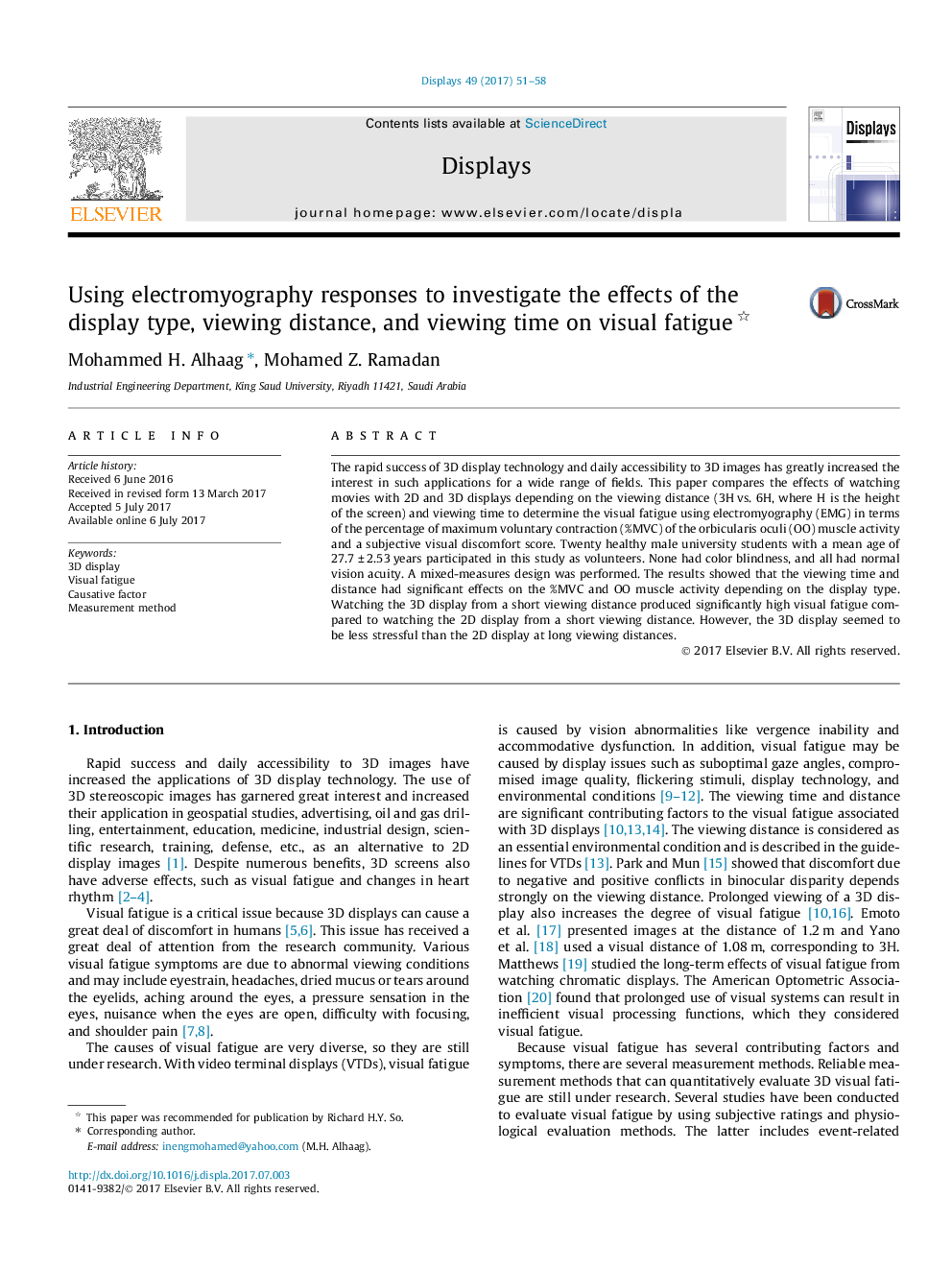| Article ID | Journal | Published Year | Pages | File Type |
|---|---|---|---|---|
| 4970571 | Displays | 2017 | 8 Pages |
Abstract
The rapid success of 3D display technology and daily accessibility to 3D images has greatly increased the interest in such applications for a wide range of fields. This paper compares the effects of watching movies with 2D and 3D displays depending on the viewing distance (3H vs. 6H, where H is the height of the screen) and viewing time to determine the visual fatigue using electromyography (EMG) in terms of the percentage of maximum voluntary contraction (%MVC) of the orbicularis oculi (OO) muscle activity and a subjective visual discomfort score. Twenty healthy male university students with a mean age of 27.7 ± 2.53 years participated in this study as volunteers. None had color blindness, and all had normal vision acuity. A mixed-measures design was performed. The results showed that the viewing time and distance had significant effects on the %MVC and OO muscle activity depending on the display type. Watching the 3D display from a short viewing distance produced significantly high visual fatigue compared to watching the 2D display from a short viewing distance. However, the 3D display seemed to be less stressful than the 2D display at long viewing distances.
Related Topics
Physical Sciences and Engineering
Computer Science
Hardware and Architecture
Authors
Mohammed H. Alhaag, Mohamed Z. Ramadan,
